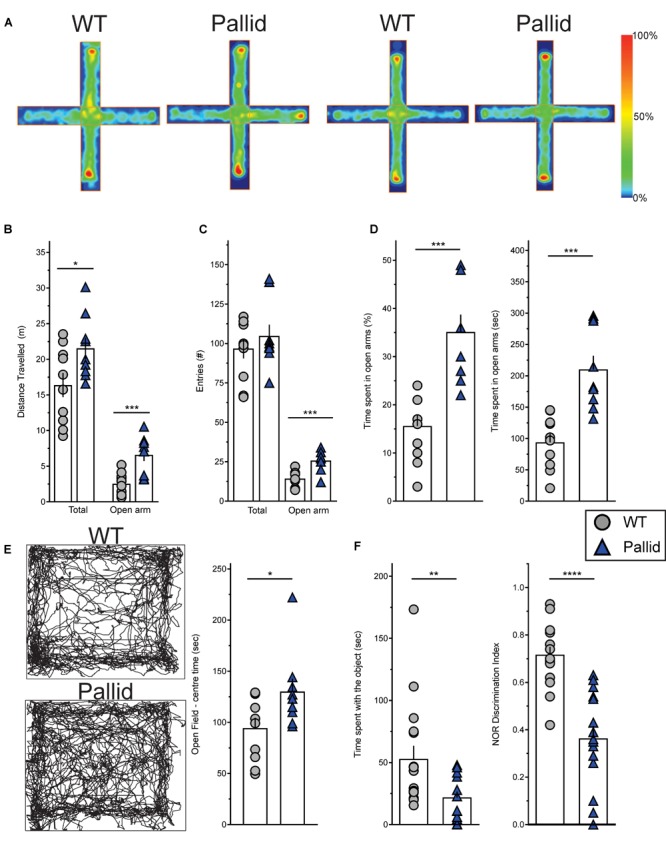FIGURE 4.

Altered behavioural performance in pallid mice. (A) Plus Maze Occupancy Plot Heat Maps: Representative heat maps (Horizontal = open arm; vertical = closed arm) of two distinct sets of wild-type (WT) + pallid showing the abnormal preference of the mutant mice for the open arm of the Elevated Plus Maze during the day/resting phase under white light (ZT2-10). The heat maps do not have absolute units, as the maximum signal is created relative to the “comparative maximum” of all mice compared in a given group. Heat maps comparisons can only be made within but not between the two groups. Heatmap scale is therefore relative, with blue representing the bottom 0–20% of time spent and red the top 80–100%. (B) The pallid mice travelled a greater distance than the WT, and most importantly, significantly more in the open arm. (C,D) Although the two genotypes had similar number of total entries, the pallid mice demonstrated a significant preference to enter (C) and stay (D) in the open arms. Student’s t-test ∗P < 0.05; ∗∗∗P < 0.001, n = 9–10 animals/genotype. (E) Open Field Occupancy Maps: Representative track plots (left panels) from individual WT and pallid mice showing that the mutant spent more time in the central part of the open field, further suggesting that they may have reduced levels of anxiety. Student’s t-test, ∗P < 0.05, n = 9–10 animals/genotype. (F) Pallid exhibited decreased novelty-induced behaviour, and spent less time exploring the objects (familiar and novel) compared to WT on day 3, and seemed almost unable to distinguish between novel and familiar objects, as suggested by the discrimination index (DI: Time spent with the novel object/Time spent with the familiar object + Time spent with the novel object) assessed on day 5. Student’s t-test, ∗∗P < 0.01 ∗∗∗∗P < 0.0001; n = 8–16 animals/genotype. Columns represent the mean ± SEM. Both the open field (E) and NOR (F) were administered during the animals’ active phase (ZT14–16) under dim red light.
